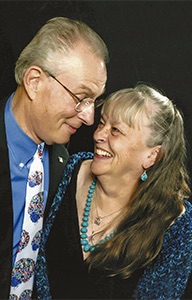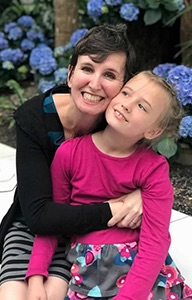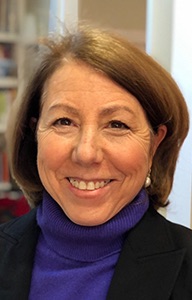Recognizing the early signs and symptoms of a stroke is crucial in minimizing the risk of lasting disability or fatality during an episode. However, it’s essential to understand what to observe.
Frequently, a stroke is confused with a heart-related event, yet it unfolds in the brain when blood flow is interrupted, either due to a blockage or bleeding. The affected part of the brain begins to perish without the necessary oxygen supply.
Consider this: the brain is the mastermind behind every action you take. It governs your ability to move, speak, think, see, feel, hear, and more. According to Mitchell Elkind, M.D., professor of neurology and epidemiology at Columbia University and president-elect of the American Heart Association, a disruption in any of these functions could indicate a stroke.
For an easy recall of the most common stroke signs, use the acronym FAST, representing “face drooping, arm weakness, speech difficulty, and time to call 911.” Dr. Elkind adds two more letters, B and E, for “balance” and “eyes,” as a loss of balance and sudden vision changes can also be indicative of a stroke. Additionally, he emphasizes that a severe headache should not be dismissed as it is another significant warning sign.
Nevertheless, not all individuals undergoing a stroke immediately exhibit the typical symptoms or recognize them promptly. For instance, headaches and dizziness might easily be attributed to everyday factors like allergies or stress. Arm weakness could be dismissed as a result of a workout strain.
“The brain is intricate; neurology is complex. Hence, these signs can occasionally be overlooked or downplayed,” emphasizes Elkind. “This underscores the significance of educating people about these indicators, preventing them from dismissing potential warning signs.”
Here’s a glimpse into the experiences of four stroke survivors in the moments and days preceding their strokes.

Doug Tapking, now 77, residing in Draper, Utah, recalls an episode from a decade ago. While awaiting a table at a steakhouse in Thousand Oaks, California, he experienced a muscle cramp in his left arm, preceded by similar incidents earlier in the day— a charley horse in his left leg and arm while preparing for a vacation. Ignoring severe headaches as sinus pressure, Tapking and his wife joined friends for dinner, discussing their upcoming cruise.
It was during this conversation that Tapking’s friend, John, noticed something amiss. “He looks at me at some point and says, ‘What’s wrong? Stop mumbling; you’re mumbling,’” Tapking recalls. Unaware of his condition, Tapking thought they were having a regular conversation. John’s abrupt question, “Are you having a stroke?” brought the situation into focus. John then proceeded to ask Tapking various questions, assessing his ability to smile or raise his arms, while Tapking, still somewhat unaware, played along.
“My right arm came up without any trouble, but my left arm was limp at my side. So I reached out and grabbed my left arm at my wrist, pulling it up to my chest level. When I let go, it just fell immediately into my lap,” Doug Tapking recalls. “And at that point, I vividly remember saying to myself, Oh crap, I’m having a stroke.”
Tapking remembers someone calling 911, but the details become somewhat hazy from there. He later discovered that the left side of his face appeared droopy, described by his wife Karen as looking “totally melted.” Paramedics swiftly transported Tapking to the nearest hospital, where doctors promptly diagnosed an ischemic stroke, the most prevalent type resulting from an obstruction. A “severe dissection” in an artery in his brain was found to be impeding blood flow.
“Think of a garden hose with multiple layers—a high-pressure hose—and a dissection is the internal portion of that hose separating and coming down into the middle of it,” explains Tapking, illustrating the cause of the blood buildup.
Doctors intervened by breaking up the clot near the dissection, inserting a stent to mend the damaged blood vessel, and administering a clot-busting drug.
In contrast to numerous stroke survivors, Tapking experienced a complete recovery, devoid of lasting physical or mental repercussions. He attributes his fortunate outcome to his friend’s swift recognition of the stroke and the prompt care he received at the hospital. Now a vocal advocate for stroke education and treatment, Tapking emphasizes the importance of knowing the location of the nearest stroke center. He advises everyone to pay attention to anything out of the ordinary, whether it’s a recurring pattern of headaches or a series of cramps, as it could be the body’s way of signaling that something is amiss.
Maury Mendenhall, 45, Washington, D.C.

“It felt like an explosion in my brain,” recounts Maury Mendenhall, reflecting on the intense pain she endured in May 2018. A mother of two and an HIV/AIDS projects worker at the United States Agency for International Development (USAID), Mendenhall had just returned from a work trip to Zimbabwe and Nigeria. Lying in bed to combat jet lag and a persistent headache, she noticed an escalation in her discomfort.
Mendenhall, unaccustomed to feeling unwell, found her headaches intensifying each day. Earlier in the week, while attempting to communicate at work, she struggled to articulate her thoughts clearly. As the pain reached an unbearable level after her trip, Mendenhall, overcome with tears, sought help from her mother, who was in town caring for her children during her travels.
They rushed to MedStar Washington Hospital Center, a five-minute drive from her home. By the time they arrived, Mendenhall was unable to exit the car and her speech had become incomprehensible.
Joyce Sampson, 64, Silver Spring, Maryland

Around a decade ago, Joyce Sampson, a resident of Maryland, encountered a peculiar incident while searching for her keys. As she tried to ask her son for help, she found herself unable to articulate the word “key.”
“I kept saying, ‘Hand me the lamp’ or ‘hand me the rug’ — something like that,” Sampson recalls. “I felt like it was unnatural.” Despite losing the ability to express the word, Sampson eventually located her keys and decided to drive herself to the hospital — a decision she now admits was a mistake. Imaging tests revealed she had experienced a stroke in her frontal lobe, marking the first of many.
Over the subsequent weeks, Sampson, a former journalist, faced various unusual symptoms that led her in and out of the hospital. She heard a “whoosh” sound and felt as if the walls were shaking. Weakness in her limbs and random loss of ability to read or write became recurrent issues.
During phone calls with her sister, Sampson spoke what she believed to be a normal conversation, but her sister’s reactions indicated otherwise. With each troubling symptom, Sampson sought medical attention, and doctors consistently diagnosed strokes. Eventually, after being kept under observation for several days, Sampson was released for rehabilitation, followed by years of therapy to recover from the repeated brain injuries.
Sampson’s advice to others is to “follow your gut.” The early signs of a stroke may not always align with textbook descriptions or appear obvious. In today’s fast-paced world, confusion and disorientation might be dismissed as stress or exhaustion, but in reality, they could indicate a more serious issue.
Debra Meyerson, 62, Menlo Park, California

It began with a peculiar sensation in her right leg, which Stanford University professor Debra Meyerson initially dismissed as a possible cramp or nerve issue. While on a family hike near Lake Tahoe, the discomfort intensified, prompting them to cut the walk short. Subsequently, Meyerson experienced a headache, and despite taking aspirin before bedtime, the pain persisted the next morning.
Concerned about his wife’s struggle to pick up medicine with her right hand and move it with great concentration, Steve Zuckerman suspected a stroke. Rushing to the nearest hospital, tests revealed brain damage, and Meyerson was transferred to a larger hospital where doctors identified a tear in her left carotid artery, blocking blood flow to her brain. The tear had likely been present for months, causing intermittent headaches and disorientation leading up to the stroke.
The severity of Meyerson’s symptoms became apparent the following morning, leaving the right side of her body paralyzed and her speech lost. Determined to reclaim her life, she endured three challenging years of rehabilitation before realizing that her journey involved rebuilding a life with disabilities. Despite giving up her tenured professorship due to aphasia—a stroke-related language impairment—Meyerson continues to work at Stanford, conducts research on stroke survivors’ rehabilitation experiences, co-wrote a book titled “Identity Theft: Rediscovering Ourselves After Stroke” with her son, and founded the nonprofit Stroke Forward with Zuckerman to assist survivors and their families in rebuilding their lives after a stroke.
Zuckerman emphasizes that recovery isn’t solely about regaining capabilities; the emotional aspect is equally crucial. Stroke Forward aims to reach and support as many individuals as possible, recognizing that not everyone will fully recover physically but emphasizing the importance of emotional recovery for the 800,000 stroke survivors each year.
